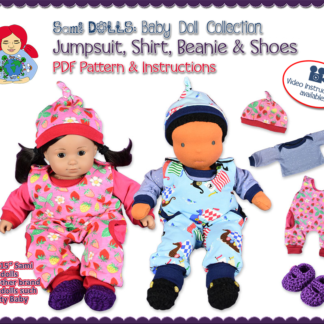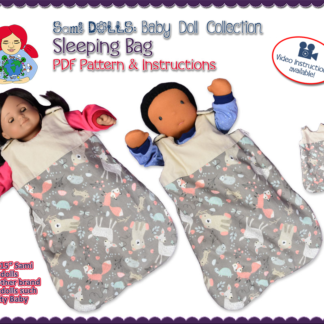
Finding the straight grain of knit fabrics is easy, as you can just slightly pull the fabric and you will see small ribs all running in one direction. This is the direction of the grain.
In woven fabrics, the straight grain runs parallel to the selvage of the fabric. On most of the Sami patterns, the grain line (straight grain) is represented with an arrow on the pattern pieces.

The selvage is the factory edge that often has the manufacturer and the name of the fabric printed on it. It often is stiffer or thicker than the fabric, therefore we don’t use it for our sewing projects and cut it off.

If your fabric has a particular print that calls for all animals, flowers etc. to be looking or pointing in the same direction, it often indicates the direction of the straight grain.

When you pull the fabric in different directions, you can easily find out which way the straight grain is running:
If you pull the fabric along the selvage edge or straight grain, the fabric hardly has any stretch. This is the direction of the straight grain. If you pull across the crossgrain, the fabric is a little stretchy and if you pull the fabric on a 45° angle, on the bias, the fabric has the most stretch.
If the fabric has no selvage edge, for example on a scrap piece of fabric, you can figure out the direction of the straight grain in that way.

If your piece of fabric is asymmetrical, you can cut it in a little along the crossgrain and then pull the fabric and an even thread line on the grain line will be left. This is the true grain line. From there we can cut our fabric according to the instructions of the pattern.
When we buy the fabric in the shop the fabric is rarely cut perfectly, so it is a good idea to find the true grain line before starting to work with the fabric.

The grain line generally runs up/ vertically in garments. If the grain line is slightly off, the fabric won’t lie nicely and sleeves or pants legs might twist around the body.
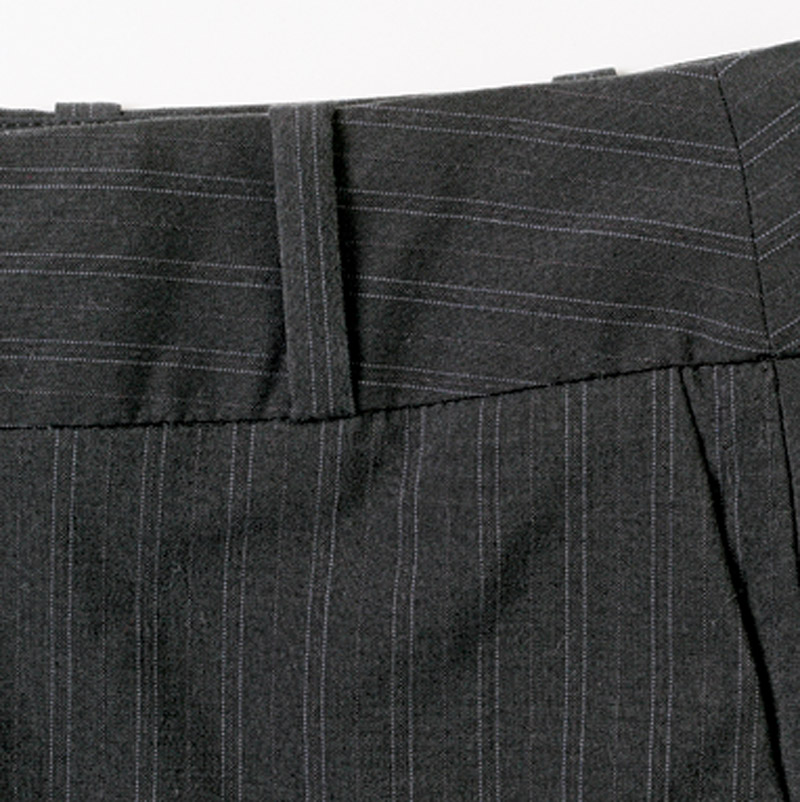
In some projects we want to cut the fabric with the straight grain, for example when making waist bands for pants, as the straight grain has the least pull and is therefore the strongest.
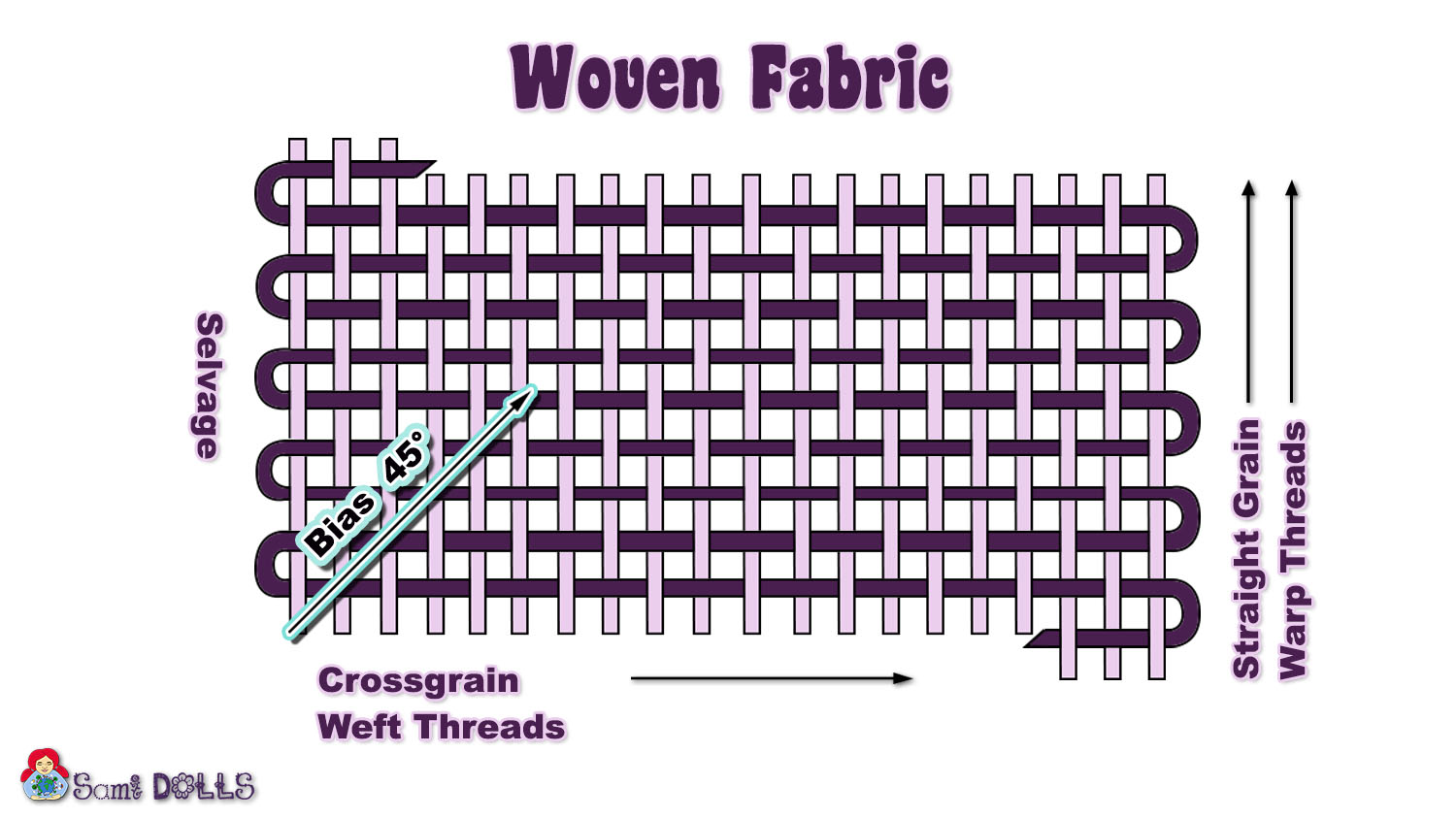
If you imagine the fabric being woven on a loom, the warp threads (in the direction of the straight grain) are running upwards, vertically,
and the weft threads are the ones that are being woven up and down through the warp threads and around the edges to the next row.
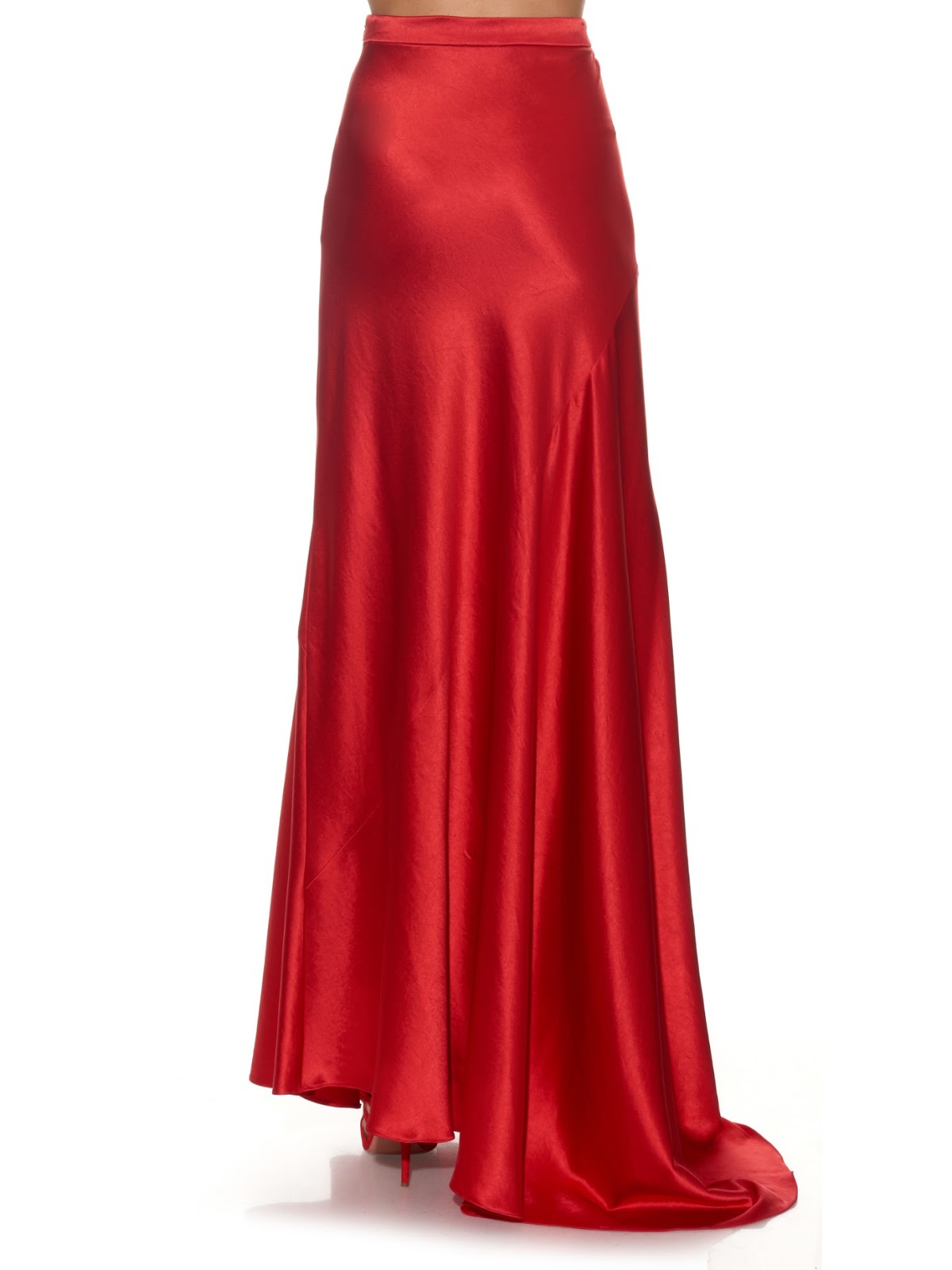
In other projects we might want to cut the fabric on the bias, for example for skirts and dresses. It makes the fabric more unstable, as it is so stretchy, but it also allows for more flexibility, the fabrics falls nicely, and you might be able to avoid sewing some darts.
When working with fabric cut on the bias you will want to hang the fabric up for 24 hours after cutting, so that it stabilizes itself into its new shape, before you start sewing with it.




